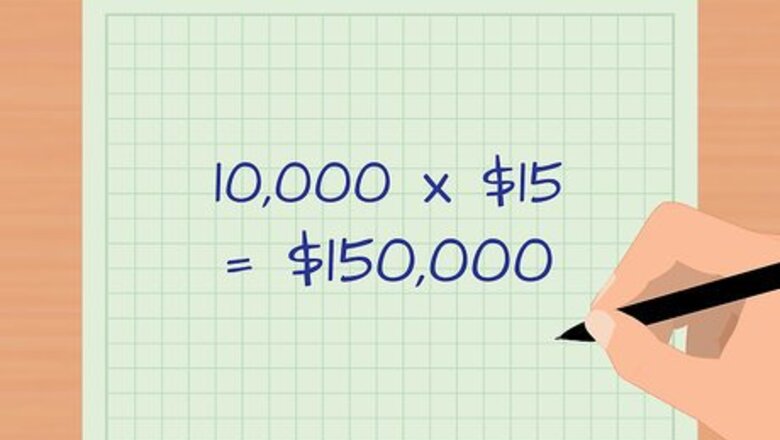
views
Using the Cost Method
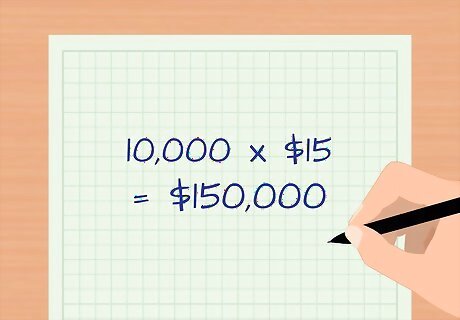
Repurchase the shares of stock you want to buy back. You will have to determine the number of shares you want to buy back in order to figure the total you will be paying out in cash in exchange for the shares. So, if you buy back 10,000 shares of stock at $15 per share, you will pay out $150,000 in cash.
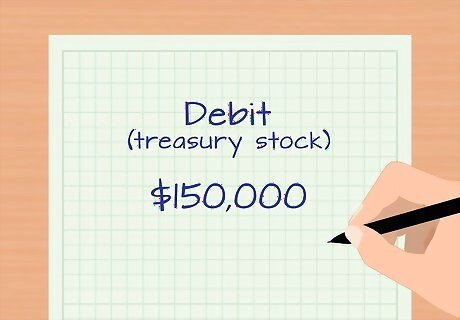
Record the transaction in the treasury stock account. You will label the debit (the amount you paid to buy back the stock) as "treasury stock." Underneath, notate a credit for the same amount in cash. Using the example of 10,000 shares from step one, you will label a debit of $150,000 as "treasury stock," and a credit for the same amount as "cash." Treasury stock is a contra-equity account. It is not treated as an asset, because a company cannot legally invest in its own stock. Rather, treasury stock is presented on the balance sheet, where it reduces the total amount of owner's equity. If the shares are purchased with another asset (for example, land instead of cash), that asset account should be credited instead.
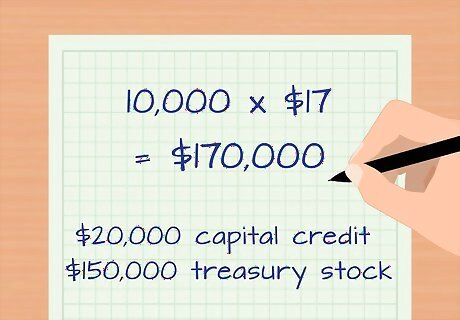
Understand that you may choose to resell the stock. If you do not resell the stock, you must retire it. Should you resell it, you will list the resale as a cash debit for the sale amount, plus a credit for any additional paid-in capital (that is, profit from reselling the stock at a higher value) in the treasury stock account. You will list the sale amount minus the additional paid-in capital as a credit for that amount marked "treasury stock." Reselling the 10,000 shares in the example from step one at $17 per share would mean you would notate the resale as a cash debit in the amount of $170,000, along with an additional paid-in capital credit of $20,000 and a treasury stock credit of $150,000.
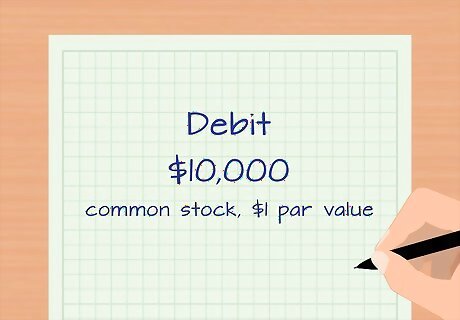
Understand that you may retire the shares. Retiring the shares requires you to notate in the treasury stock account the par value of the common stock—which is the face value of the stock—as a debit. If your 10,000 shares of stock from the example in step one had a par value of $1 each, you would notate that as "common stock, $1 par value" along with a debit in the amount of $10,000. You would list the amount paid above the par value as an additional paid-in capital debit, which would mean $140,000 for the example in step one. You would need to notate a treasury stock credit in the full amount, which would be $150,000 for the 10,000 share example.
Using the Constructive Retirement Method
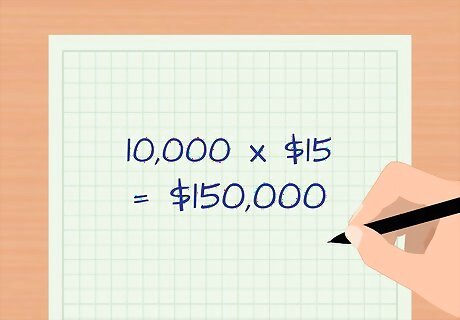
Buy back the number of shares of stock your board has decided on. Multiply the number of shares by the price per share to determine the amount of money you will have to pay out. If you were buying back 10,000 shares with a par value of $1 originally sold for $12 each at $15 per stock, you would pay out $150,000.
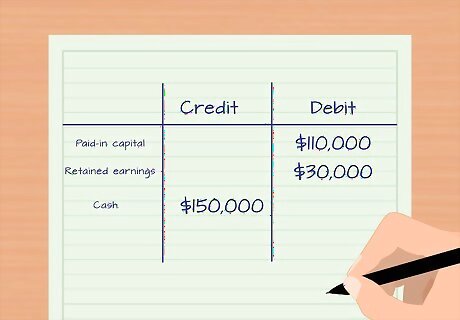
Record the transaction. You will need to list the common stock as a debit for the par value, so 10,000 shares with a par value of $1 would be listed as "common stock, par value $1" with a debit amount of $10,000. Notate the original sale price minus the par value as additional paid-in capital. Since the 10,000 shares in the example were originally sold at $12 per share, the additional paid-in capital debit amount would be $110,000. The remaining $30,000 from the 10,000 shares bought back at $15 per share will be notated as a retained earnings debit. Finish the notation with a cash credit in the full amount—the example would be a cash credit of $150,000.

Understand that the common stock and additional paid-in capital amounts are eliminated. Using the constructive retirement method for the buy back of shares eliminates the common stock and additional paid-in capital amounts so they can be written in as a credit along with the retained earnings. This method is used when it is assumed that the stock will not be reissued.




















Comments
0 comment